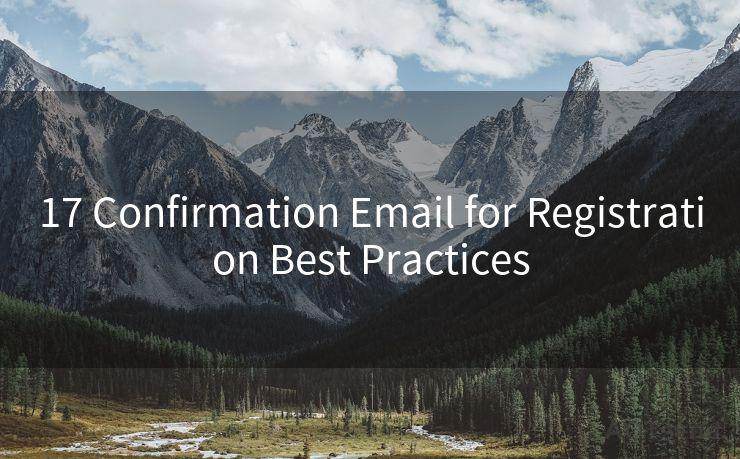17 Confirmation Email for Registration Best Practices




When it comes to user registration on websites or applications, sending a confirmation email is a crucial step. This email not only verifies the user's email address but also helps to ensure the security and validity of the account. Here are 17 best practices for crafting an effective registration confirmation email.
1. Clear and Concise Subject Line
Start with a subject line that clearly states the purpose of the email, such as "Confirm Your Email Address for [Website/App Name]". This helps the recipient understand the email's content and purpose instantly.
2. Personalized Greeting

Use the user's name in the greeting to add a personal touch. For example, "Dear [User Name]," makes the email feel more personal and less like a mass email.
3. Explain the Purpose
In the opening paragraph, briefly explain why the user is receiving this email. Mention that they have recently registered on your platform and this email is to confirm their email address.
4. Include a Confirmation Link or Code
Provide a clear and prominent link or code that the user must click or enter to confirm their email address. Ensure the link is easily identifiable and stands out from the rest of the text.
5. Instructions for Confirmation
Give step-by-step instructions on how to use the confirmation link or code. Keep it simple and straightforward to avoid any confusion.
6. Reassurance of Security
Mention that the confirmation process is secure and that their personal information is protected. This helps to build trust with the user.
7. Contact Information
Include your contact information, such as an email address or support ticket system, in case the user encounters any issues during the confirmation process.
8. Design and Layout
Ensure the email is visually appealing and easy to read. Use a clean layout, legible font, and sufficient white space to enhance readability.
9. Mobile-Friendly Design
Since many users access their emails on mobile devices, ensure the email is mobile-responsive and displays correctly on smaller screens.
10. Call to Action
Include a prominent call to action (CTA) button or link that encourages the user to complete the confirmation process.
11. Avoid Spam Triggers
Be cautious of using words or phrases that might trigger spam filters, such as "free," "win," or "prize."
12. Test the Email
Send test emails to yourself or colleagues to check for any formatting issues, broken links, or other potential problems.
13. Use a Recognizable Sender Name
Ensure the sender name is recognizable and associated with your brand. This helps to build trust and avoid confusion.
14. Unsubscribe Option
Include an unsubscribe link in case the user no longer wishes to receive emails from your platform.
15. Privacy Policy Link
Provide a link to your privacy policy to assure users that their data is being handled securely and responsibly.
16. Follow-Up Email
Consider sending a follow-up email if the user hasn't confirmed their email address within a certain timeframe.
17. Measure and Optimize
Track the performance of your confirmation emails, such as open rates, click-through rates, and conversion rates. Use this data to optimize your emails for better results.
By following these best practices, you can create an effective registration confirmation email that enhances the user experience, builds trust, and encourages users to complete the confirmation process. Remember to continually test and optimize your emails to ensure they are achieving the desired results.




🔔🔔🔔
【AOTsend Email API】:AOTsend is a Managed Email Service for sending transactional emails. Support Email Types: reminders, authentication, confirmations, notifications, verification codes, invoices, password resets, account activations, billing statements, two-factor authentication (2FA), and one-time passwords (OTP) emails, etc. $0.28 per 1000 Emails. 99% Delivery, 98% Inbox Rate.
You might be interested in:
Why did we start the AOTsend project, Brand Story?
What is a Managed Email API, How it Works?
Best 25+ Email Marketing Platforms (Authority,Keywords&Traffic Comparison)
Best 24+ Email Marketing Service (Price, Pros&Cons Comparison)
Email APIs vs SMTP: How they Works, Any Difference?
Scan the QR code to access on your mobile device.
Copyright notice: This article is published by AotSend. Reproduction requires attribution.
Article Link:https://www.mailwot.com/p6399.html



